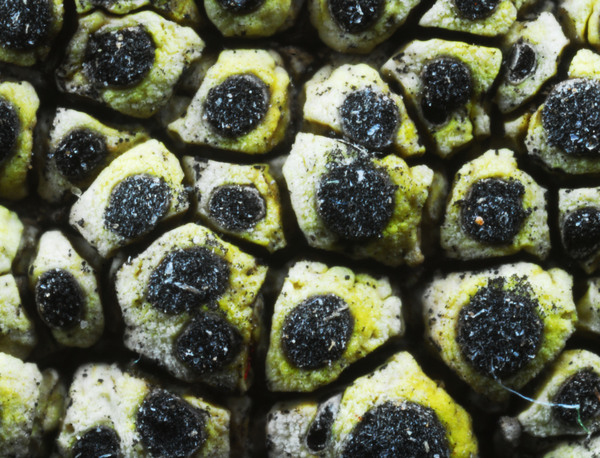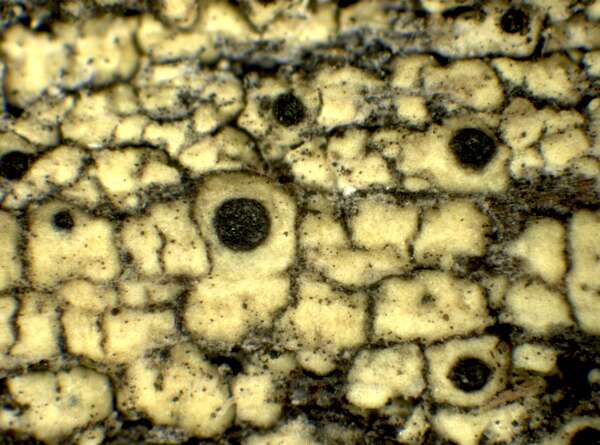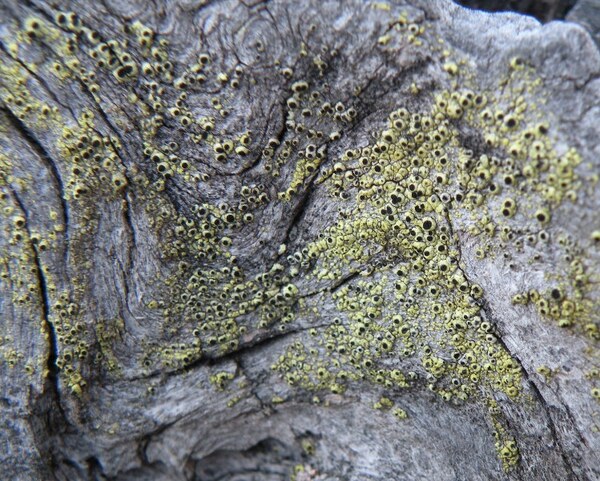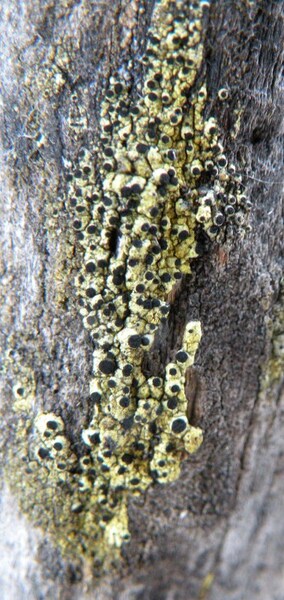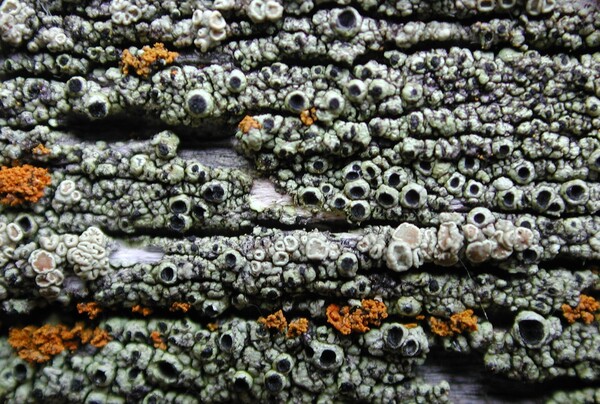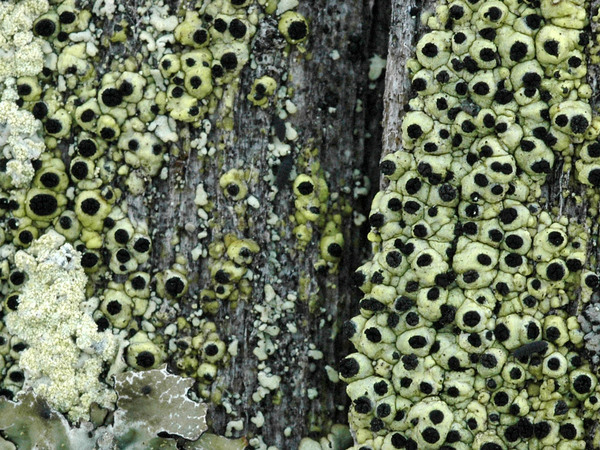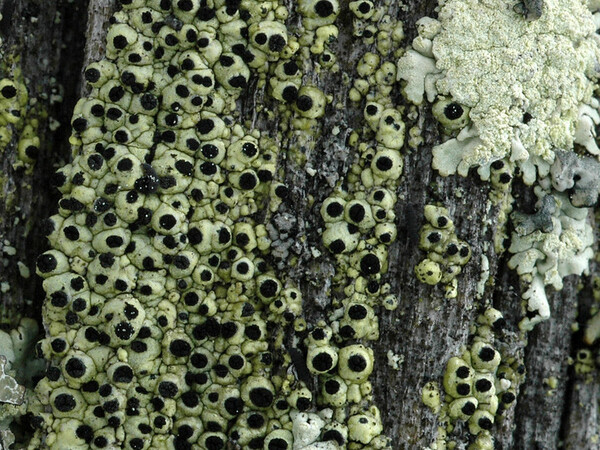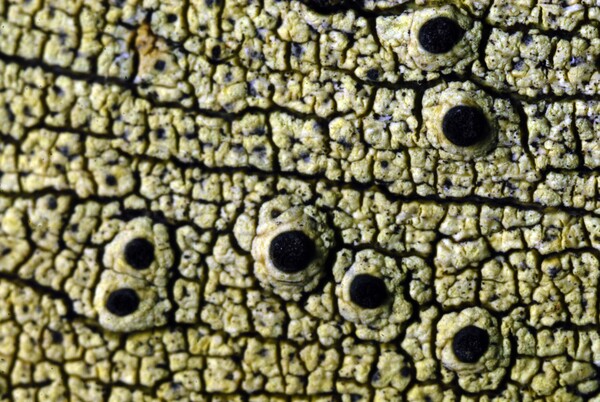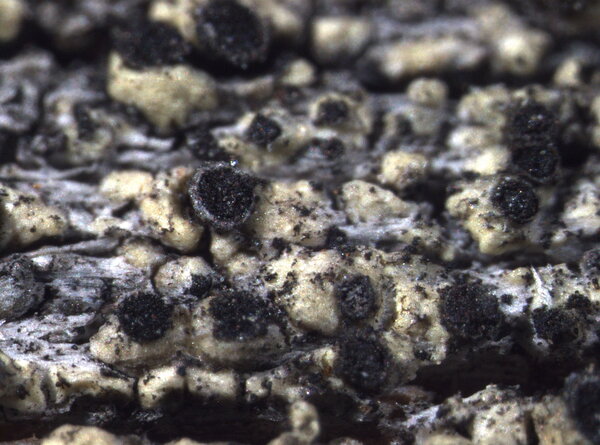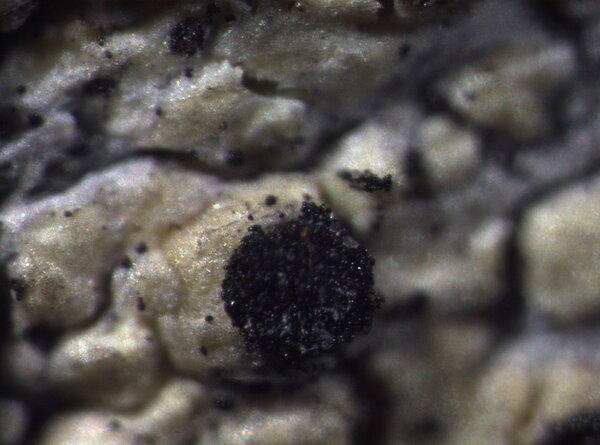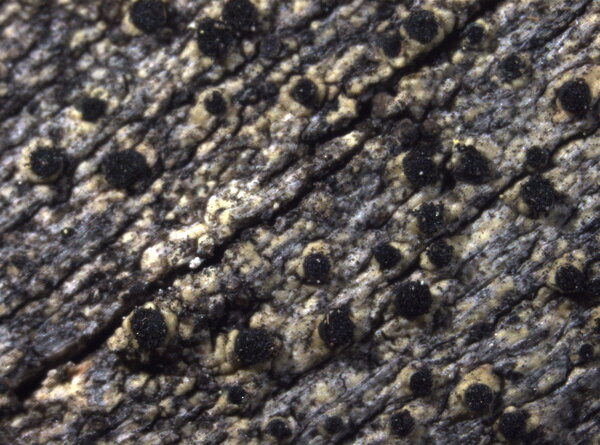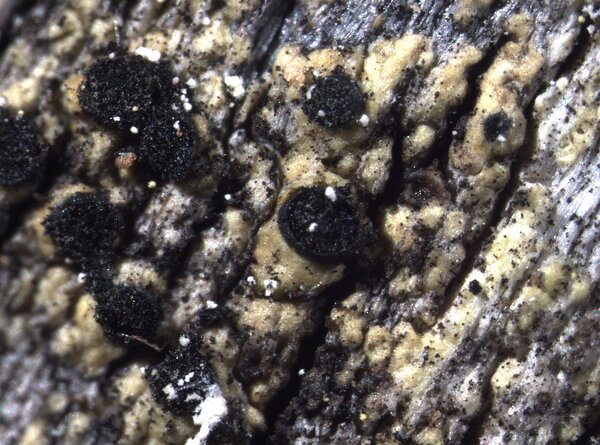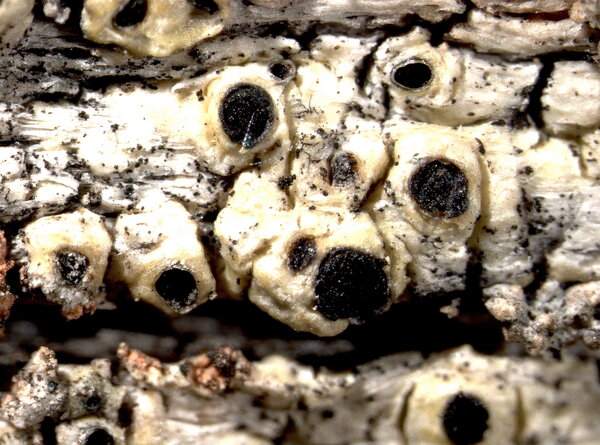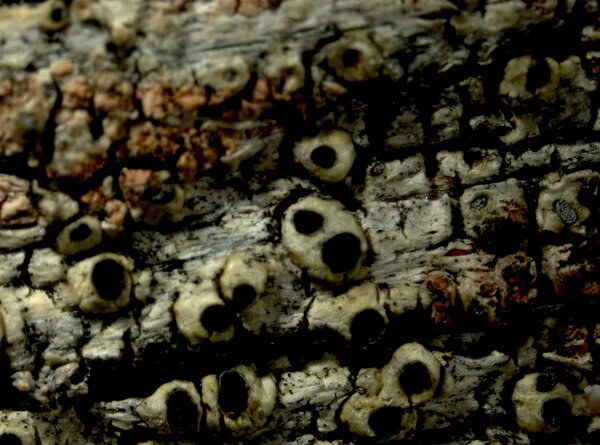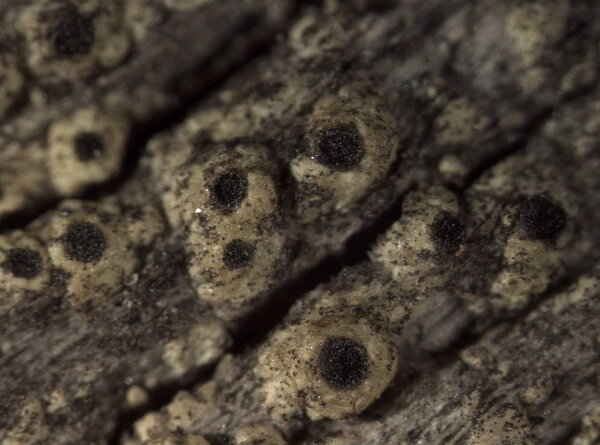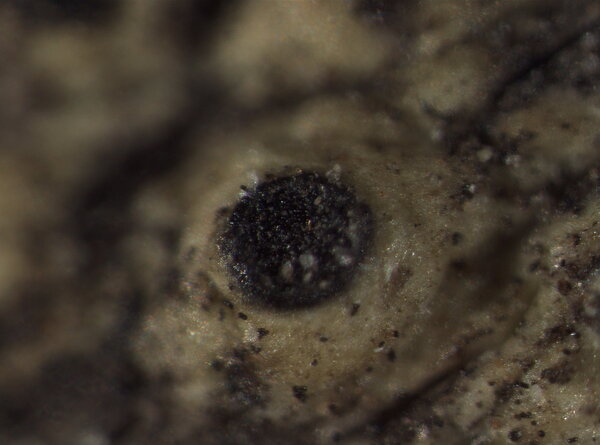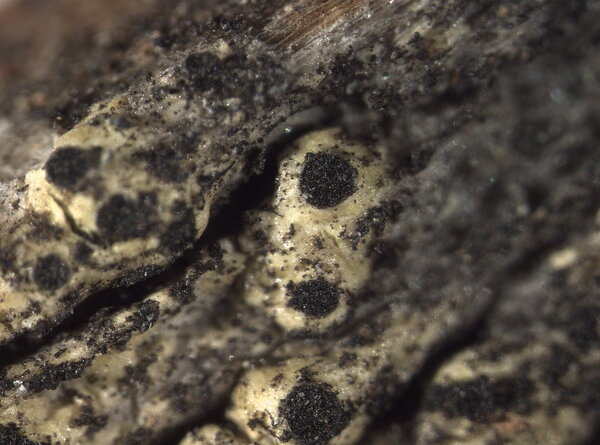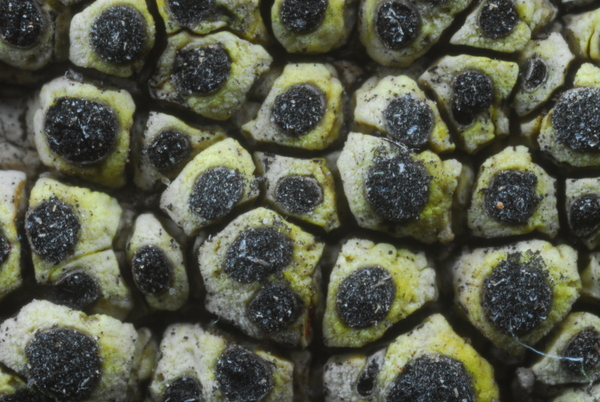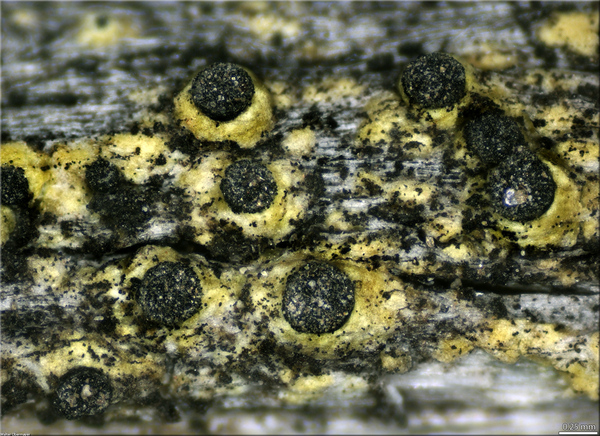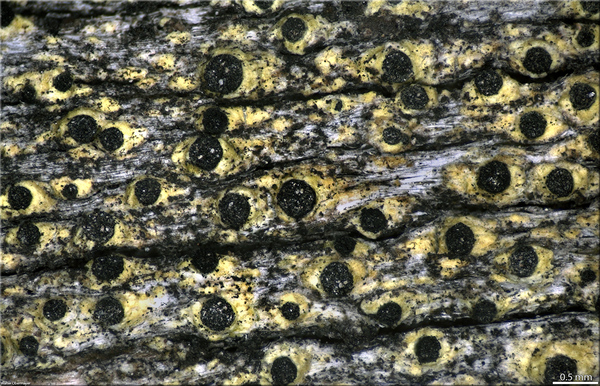Calicium tigillare (Ach.) Pers.
Ann. Wetter. Gesellsch. Ges. Naturk., 2: 14 1811 (1810). Basionym: Lichen tigillaris Ach. - Lichenogr. Suec. Prodr.: 67, 1799.
Synonyms: Acolium tigillare (Ach.) Gray; Cyphelium tigillare (ach.) Ach.; Cyphelium trachylioides auct. p.p.; Cyphelium viridescens auct. p.p.; Trachylia tigillaris (Ach.) Fr.
Distribution: N - Frl (Puntillo & Puntillo 2009), Ven (Nascimbene & Caniglia 2002c, 2003c, Nascimbene & al. 2006e, Nascimbene 2008c, Puntillo & Puntillo 2009), TAA (Caniglia & al. 2002, Nascimbene & al. 2005, 2006, 2006e, 2007b, 2008c, 2009, 2010, 2014, 2014c, 2022, Nascimbene 2006b, 2006c, 2008b, 2013, 2014, Thor & Nascimbene 2007, Matteucci & al. 2008c, Puntillo & Puntillo 2009, Nimis & al. 2015), Lomb (Nascimbene & al. 2006e, Puntillo & Puntillo 2009, Gheza 2019b), Piem (Isocrono & al. 2004, Isocrono & Piervittori 2008, Puntillo & Puntillo 2009), VA (Piervittori & Isocrono 1999, Valcuvia 2000, Matteucci & al. 2008, Puntillo & Puntillo 2009), Emil (Puntillo & Puntillo 2009, Fariselli & al. 2020). S - Cal (Puntillo & Puntillo 2014c).
Description: Thallus crustose, usually verrucose, rarely almost endosubstratic, intensely yellowish green. Cortex with numerous small yellowish green crystals. Apothecia immersed in the warts, epruinose, 0.4-1 mm across. Exciple uniformly thin throughout, blackish brown, of sclerotized, strongly intertwined hyphae with thickened walls; mazaedium black, epruinose; hypothecium pale to medium brown. Asci pyriform, dissolving early, with 2-3-seriate ascospores. Ascospores 1-septate and constricted at septum, brown, broadly ellipsoid, 17-22 x 6-7 µm, with a smooth surface. Pycnidia at first spherical to ellipsoid, later confluent and forming irregular, up to 0.4 mm wide aggregates. Conidia 1-celled, hyaline, ellipsoid, 3-4 x c. 1.5 µm. Spot tests: thallus K-, C-, KC-, P-. Chemistry: thallus with rhizocarpic acid, epanorin and two unidentified substances.Note: a mainly boreal-montane, circumpolar lichen found in upland areas on hard, dry wood, especially of conifers, on wooden fences and fence-posts, often together with Ramboldia elabens. Widespread throughout the Alps, reaching South up to the mountains of Calabria.
Growth form: Crustose
Substrata: lignum
Photobiont: green algae other than Trentepohlia
Reproductive strategy: mainly sexual
Commonnes-rarity: (info)
Alpine belt: absent
Subalpine belt: rather common
Oromediterranean belt: extremely rare
Montane belt: extremely rare
Submediterranean belt: absent
Padanian area: absent
Humid submediterranean belt: absent
Humid mediterranean belt: absent
Dry mediterranean belt: absent
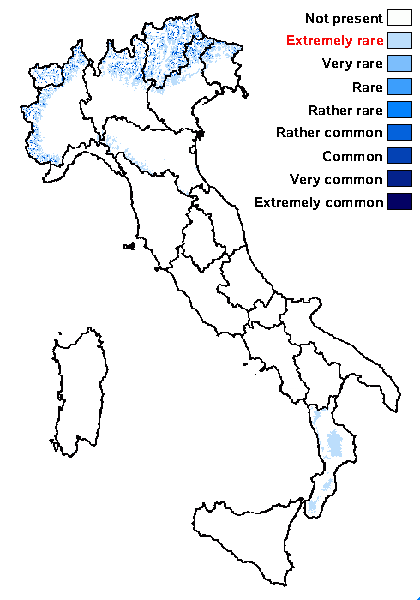
Predictive model
Herbarium samples
Growth form: Crustose
Substrata: lignum
Photobiont: green algae other than Trentepohlia
Reproductive strategy: mainly sexual
Commonnes-rarity: (info)
Alpine belt: absent
Subalpine belt: rather common
Oromediterranean belt: extremely rare
Montane belt: extremely rare
Submediterranean belt: absent
Padanian area: absent
Humid submediterranean belt: absent
Humid mediterranean belt: absent
Dry mediterranean belt: absent

Predictive model
| Herbarium samples |
 Index Fungorum
Index Fungorum
 GBIF
GBIF
